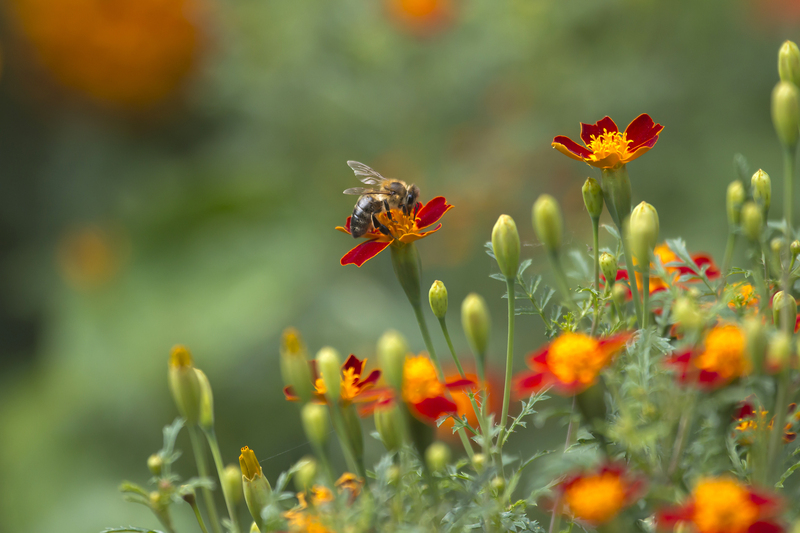Gardening: Small Changes, Big Impact on Climate Change
Posted on 19/08/2025
Gardening: Small Changes, Big Impact on Climate Change
As concerns about climate change continue to grow, more people are looking for actionable ways to reduce their carbon footprint and promote environmental sustainability. One often-overlooked solution lies right in our own backyards: gardening. Whether you live in an urban apartment or a sprawling suburb, making thoughtful choices in your garden can have a remarkable effect on the global climate. Let's explore how small changes in gardening practices can drive big impacts in the fight against climate change.

Why Gardening Matters in the Climate Change Discussion
Gardening might seem like a humble hobby, but its environmental significance is immense. Landscaping decisions, plant selections, and even soil treatments determine how much carbon your gardening space locks away or emits. Research shows that gardens can act as vital carbon sinks, absorbing greenhouse gases and supporting biodiversity, both critical in combating climate change.
The Role of Urban and Home Gardens in Carbon Sequestration
Carbon sequestration refers to the process of capturing and storing atmospheric carbon dioxide. Plants absorb CO2 during photosynthesis, effectively removing it from the atmosphere. While forests are the most famous carbon sinks, personal and community gardens together create a network of "mini-forests" with big potential.
- Soil Health: Healthy soil with abundant organic matter can store up to 20% more carbon.
- Perennial Plants: Trees, shrubs, and perennial flowers lock away carbon for years, compared to annuals that decompose quickly.
- Composting: Composting garden and kitchen waste returns carbon to the soil instead of releasing it as methane in landfills.
Small Gardening Changes, Big Environmental Impacts
Even the smallest yard or balcony garden can become a climate-change champion with a few strategic changes. Let's break down the biggest eco-benefits of minor gardening tweaks.
1. Choosing Native and Drought-Resistant Plants
Native plants are adapted to local conditions, requiring less water, fertilizers, and pesticides. This reduces resource consumption and the carbon emissions associated with producing and transporting chemicals.
- Lower Water Usage: Native and drought-tolerant plants thrive on natural rainfall, conserving critical water supplies.
- Reduced Chemical Inputs: These plants are less susceptible to pests, cutting the need for potentially harmful sprays.
- Biodiversity: Native gardens attract local pollinators and support the surrounding ecosystem, enhancing resilience to climate impacts.
2. Composting: Turning Waste into Climate Action
Composting is one of the simplest ways gardeners can shrink their carbon footprint. Organic waste that ends up in landfills generates methane, a greenhouse gas 25 times more potent than CO2. By composting:
- You reduce landfill waste: Less organic matter decomposes anaerobically in dumps.
- You enrich the soil: Compost increases soil carbon storage while feeding your plants.
- You reduce fertilizer use: Compost naturally supplies nutrients, lowering the need for synthetic fertilizers, which are energy-intensive to produce.
3. Smarter Water Practices
Climate change can intensify droughts and alter rainfall patterns. Water-wise gardening not only fights climate change but also prepares gardens for these challenges.
- Rain Barrels: Capture runoff for irrigation and reduce demand on drinking water supplies.
- Drip Irrigation: This delivers water directly to plant roots, minimizing evaporation and water waste.
- Mulching: A layer of organic mulch keeps the soil moist, curbs weed growth, and further boosts soil carbon.
Gardening Methods to Reduce Greenhouse Gas Emissions
Beyond plant selection and composting, additional gardening habits help curb greenhouse gas emissions and foster a sustainable environment.
Go Organic--Say No to Chemical Fertilizers and Pesticides
Chemical fertilizers and pesticides are typically derived from fossil fuels. Their overuse contributes to nitrous oxide emissions, a greenhouse gas nearly 300 times more potent than CO2. Many gardeners embrace organic gardening practices to address this:
- Crop rotation and polyculture prevent pest outbreaks naturally, reducing the need for chemical interventions.
- Companion planting encourages beneficial insects, further limiting pesticide use.
- Organic fertilizers (like compost, seaweed, or manure) feed the soil rather than deplete it, fostering resilient plant growth.
Plant More Trees and Shrubs
Trees and large shrubs are unrivaled in their ability to capture carbon. Adding a few trees or hedges to your garden can:
- Absorb carbon dioxide for decades or centuries
- Provide shade, reducing the need for air-conditioning and energy usage
- Support wildlife and stabilize soil, leading to numerous ecosystem benefits
Encourage Wildlife and Pollinators
Biodiversity improves climate resilience. By providing habitats for birds, bees, and butterflies, your garden helps support food webs that manage pests naturally and aid pollination. This reduces the need for synthetic chemicals and supports robust, climate-adapted ecosystems.
The Cumulative Power of Home Gardens
Imagine the combined effect if millions of home gardeners adopt eco-friendly practices. According to the Royal Horticultural Society, UK gardens store approximately 10 million tons of carbon, equivalent to the annual CO2 emissions of millions of cars. As more landscapers and homeowners make climate-conscious choices, the balance can tip toward a more sustainable future.
Community Gardens: Amplifying the Effect
Community gardens multiply these environmental benefits:
- Efficient land use in urban settings, reducing unused concrete surfaces
- Opportunities for composting and rainwater harvesting at scale
- Community education and outreach, spreading climate-friendly gardening practices
The Urban Heat Island Effect: Gardens as a Cooling Solution
Urban areas absorb and re-radiate heat due to concrete and asphalt, leading to higher local temperatures--a phenomenon known as the urban heat island effect. Increasing green spaces and rooftop gardens can:
- Reduce energy consumption by cooling air temperatures
- Improve air quality by filtering pollutants and trapping particulates
- Mitigate stormwater runoff, reducing flood risks
Gardeners' Guide to Climate-Smart Gardening
Ready to turn your gardening hobby into a climate-mitigating powerhouse? Here's an actionable guide for making small-scale changes that yield big environmental returns.
Step 1: Assess and Plan
- Conduct a Plant Audit: List current plants. Are they native? Resilient to changing seasons?
- Study Your Soil: Conduct a soil test to identify organic matter. Begin amending with compost if low in carbon.
- Plan for Diversity: Incorporate layers--groundcovers, perennials, trees, and shrubs--to boost carbon sequestration and resilience.
Step 2: Implement Water-Saving Measures
- Install a Rain Barrel: Harvest rainwater for irrigation.
- Switch to Drip Irrigation: A simple DIY system can be set up with minimal tools.
- Mulch Generously: Wood chips, straw, or leaves retain moisture and feed soil life.
Step 3: Compost and Recycle Organics
- Set Up a Compost Bin: Even a small pile reduces waste and produces rich soil amendments.
- Recycle Grass Clippings and Leaves: Use them as mulch or add to compost for a nutrient boost.
- Share surplus with neighbors: Many communities have garden-waste exchange programs.
Step 4: Choose Sustainable Tools and Products
- Go Electric or Manual: Opt for electric or manual mowers and trimmers over gasoline models.
- Source Locally: Buy plants and soil amendments from nearby nurseries to cut transport emissions.
- Repurpose and Reuse: Recycle containers, supports, and other garden materials rather than buying new.
Overcoming Barriers: Tips for Beginners
Starting on the path to climate-friendly gardening can feel overwhelming for beginners. Consider these tips to make the transition easier and more enjoyable:
- Start Small: Even container gardens on a balcony make a difference.
- Join a Community Garden: Learn from others and share resources.
- Seek Local Guidance: Contact your local agricultural extension office for advice on native and drought-resistant plants.
- Educate Yourself: Countless free online resources provide step-by-step instructions on composting, organic gardening, and sustainable landscaping.

The Future of Gardening: Innovations for Climate Change
As technology and climate science advance, so too do the tools available to gardeners fighting climate change. New trends include:
- Living Roofs and Green Walls: Transforming structures into carbon sinks and thermal insulators
- Smart Irrigation Systems: Sensors and timers that optimize water use based on weather data
- Climate-Resilient Seed Varieties: Plants bred to thrive in unpredictable weather conditions
- Citizen Science: Gardeners using apps to record plant growth and phenology, contributing to climate research
Policy and Community Support for Climate-Smart Gardening
Many cities and policy makers are recognizing the importance of gardening in climate action plans:
- Grants for rain barrels and compost bins
- Incentives for native landscaping
- Urban garden plots as part of municipal climate resilience strategies
Check with your local government or gardening clubs for ways to participate and receive support.
Conclusion: Every Garden Counts in the Climate Fight
Gardening, once seen mainly as a pastime or aesthetic pursuit, is now a frontline strategy in our response to climate change. The cumulative effect of millions of individual gardeners making sustainable choices is profound. By prioritizing native plants, composting, water conservation, organic methods, and biodiversity, we all can transform small backyard changes into sweeping environmental progress.
Start today--no matter your experience level or the size of your growing space, your garden has the power to make a big impact on climate change.
As the saying goes, "The best time to plant a tree was 20 years ago. The second-best time is now."
Further Reading and Resources:
- NASA Climate Kids: Gardening and Climate Change
- Royal Horticultural Society: Gardening for Climate Change
- US EPA: Greenacres - Landscaping with Native Plants
Your garden is more than a personal sanctuary--it's a powerful tool for climate action.

